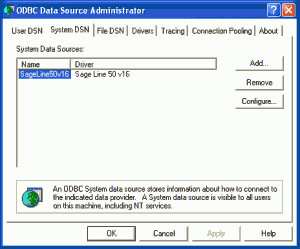

- #Odbc manager locatio install#
- #Odbc manager locatio drivers#
- #Odbc manager locatio driver#
- #Odbc manager locatio full#
| country_name | country_id | country_id| street_address | city | SQL> SELECT c.country_name, c.country_id, l.country_id, l.street_address, l.city FROM countries c LEFT JOIN locations l ON l.country_id = c.country_id WHERE c.country_id IN ('US', 'UK', 'CN') Now, quit sqlite3 and re-run the same query from isql, the ODBC-based utility: $ isql -v mysqlitedb United States of America|US|US|2004 Charade Rd|Seattle United States of America|US|US|2011 Interiors Blvd|South San Francisco United States of America|US|US|2014 Jabberwocky Rd|Southlake United Kingdom|UK|UK|Magdalen Centre, The Oxford Science Park|Oxford United Kingdom|UK|UK|8204 Arthur St|London LEFT JOIN locations l ON l.country_id = c.country_id Still in sqlite3, check that the database has been populated by running the test SQL query listed above: sqlite> SELECT Go to the following links, copy the SQL statements and paste them in sqllite3: table creation and insert data. The file sampledb has been created in the directory specified in ~/.odbc.ini.

Use “.open FILENAME” to reopen a persistent database. To populate a database, start sqllite3: $ /usr/bin/sqlite3Ĭonnected to a transient in-memory database.
#Odbc manager locatio driver#
Let’s test the connection via ODBC using the command isql included with the ODBC driver manager: $ isql mysqlitedb -v
#Odbc manager locatio full#
The default file location is the current user’s home directory but it can be changed and its full path name set in the environment variable $ODBCINI. It is also possible to directly specify in-line all the parameters in this section when connecting programmatically but the code will need to be edited (and maybe recompiled) in case one them has to be changed, so using a DSN is preferable. When connecting to a data source, the name that is specified here between square brackets, the DSN, is enough. The ~/.odbc.ini file allows to hide a drivers’ private settings so that they don’t need to be specified later. Which is the information we just entered above. List our new DSN: $ odbcinst -q -s -n mysqlitedb List all the DSN currently defined in ~/.odbc.ini $ odbcinst -q -s Query a particular driver: $ odbcinst -q -d -n SQLiteĪs user debian, edit the file ~/.odbc.ini and add the SQLite data source’s details we will use: $ cd $workdirĭatabase=/home/debian/odbc4gawk/sqlite/sampledb List the installed ODBC drivers: $ odbcinst -q -d
#Odbc manager locatio install#
SQLite along with its administrative tool isql are installed by the native package manager as root: # apt install sqlite3Įach time an ODBC driver is installed, it updates the file /etc/odbcinst.ini with driver-dependent information, which can later be checked using the above command odbcinst, e.g.:
#Odbc manager locatio drivers#
We are now ready to install the ODBC drivers for each data source of interest. Uid=1000(debian) gid=1000(debian) groups=1000(debian)Īs most of the ODBC drivers have their shared libraries installed in /usr/lib/x86_64-linux-gnu/odbc, this path must be added the $LD_LIBRARY_PATH environment variable of any user that must use ODBC, preferably in the ~/.bashrc file (if bash is the select shell): export LD_LIBRARY_PATH=/usr/lib/x86_64-linux-gnu/odbc:$LD_LIBRARY_PATH

Let’s create a working folder in user debian’s home directory, our test account: $ id It is the default one, but its location can be changed and set in the environment variable $ODBCINST. The system-wide file /etc/odbcinst.ini stores the list of installed ODBC drivers and is maintained by root. :~# apt install unixodbcįILE DATA SOURCES.: /etc/ODBCDataSources The driver manager can be installed as root through the standard package management tool in Debian: :~# apt-get install libodbc1 There are 2 main implementations of ODBC for Linux: UnixODBC () and iODBC () we picked the former for no particular reason. The test system is a debian v11 (bullseye). Excepting the present part which deals with the ODBC Driver manager’s installation which is a prerequisite, each part can be used independently from the others. The goal is to set up a self-standing environment for testing an ODBC extension for gawk presented here to be completed. This article is part of a series that includes Firebird, Postgresql, Microsoft SQLServer, Oracle RDBMS, HSQLDB, MariaDB, MongoDB, and Excel.


 0 kommentar(er)
0 kommentar(er)
